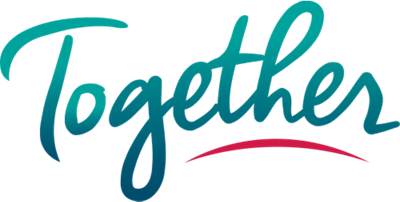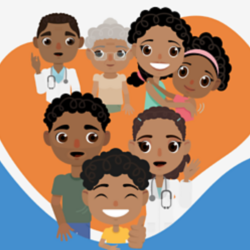Learn the Signs of Cancer Treatment Side Effects to Improve Survival
Read this article in Portuguese or Spanish.
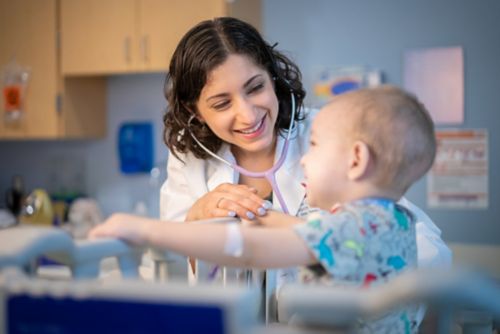
Asya Agulnik, MD, of the St. Jude Global Critical Care Program shares why family members and care teams should report the signs and symptoms of cancer treatment right away. "Family concerns help us identify when a child needs further treatment to prevent serious illness."
Cancer treatments kill cancer cells but can also harm normal cells and affect body functions. Some treatment side effects can become life-threatening problems if they are not noticed, reported, and treated right away.
The chances of survival after cancer treatment depend on where a child lives. If they live in high-income countries, their chances of 5-year survival are 80%. But 90% of children with cancer worldwide live in low- and middle-income countries. In these countries, the 5-year survival is only 20%.
Asya Agulnik, MD, wanted to know why children with cancer have different survival rates in different countries. Two research studies were done as part of the St. Jude Global effort to improve childhood cancer survival rates worldwide.
The first study was conducted with medical student Bella Ehrlich. In this study, researchers found that children in low- and middle-income countries with cancer had treatment-related mortality rate of 7%. But in high-income countries, the treatment-related mortality rate in children with cancer was only 3–5%. The most common problems after treatment were breathing problems, infection, and sepsis. These problems can be prevented or treated if they are detected early.
To help address the challenge of treatment-related complications, St. Jude staff worked with health care teams from 32 hospitals treating childhood cancer with limited resources in 11 Latin American countries. These care teams learned how to use Pediatric Early Warning Systems (PEWS) through a program called Proyecto EVAT to find early warning signs of treatment-related problems in hospitalized children with cancer.
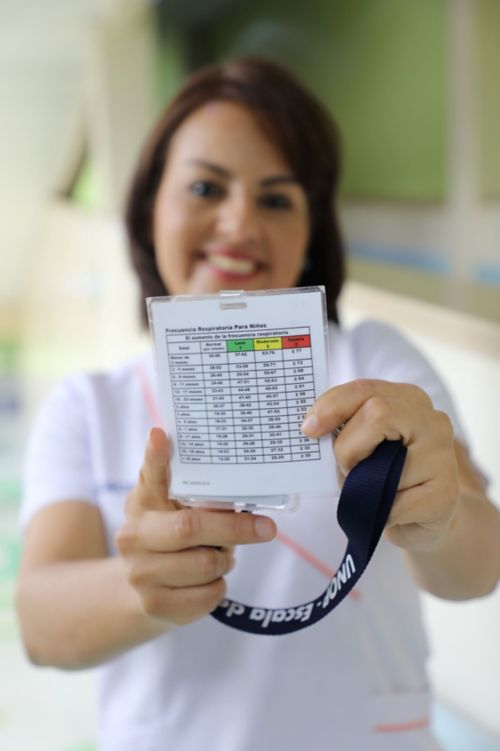
Nurses in Unidad Nacional de Oncologia Pediatrica (UNOP) in Guatemala City learned how to use Poyecto EVAT to recognize the signs of declining health in young patients treated for cancer.
Nurses use PEWS, or EVAT in Spanish, to watch and record details about the patient, such as:
- Body temperature changes
- Heart rate
- Breathing speed
- Patient’s behavior
The nurses also take notes about their concerns or those of the patient’s family.
PEWS is used to create a score that shows how much a child’s health is worsening. Based on the score, clinical teams follow a group of instructions (algorithm). This guide helps the teams know how to care for the child’s treatment-related problems.
The research team collected data about treatment-related problems from 2,020 children in Latin America. The team compared results before and after each hospital applied PEWS. As a result of this scoring system:
- Patients got treatment for complications earlier and faster.
- Survival following treatment complications increased 18%.
- The children had less severe illness.
- This improvement was greatest in hospitals that usually had more complications during cancer treatment.
The use of PEWS helped children get treated faster and improved their survival.
How families can identify serious side effects related to treatment
Identifying side effects and getting treatment can be hard. But families and care teams can help. They can learn and report the signs and symptoms of problems early.
“Because the family is at the bedside and knows their child, they’re often the first to see something,” Agulnik says. “If they see a change, they should tell their medical team and trust their instincts.”
Report anything that seems “different” for the child, including:
- Nausea, vomiting, or diarrhea that does not stop
- Changes in skin color
- Headache
- Chills
- Coughing
- Fast breathing
- Change in activity (not playing as much)
- Sleeping a lot or not waking up as normal
- Weakness
- Muscle cramps or twitching
- Urinating less
"Often the family member is the first to see that something is starting to happen. The earlier we see that, the better for the child."
These may be signs of fever and infection, lung and breathing problems, or the start of life-threatening conditions such as sepsis, cytokine release syndrome (CRS), or tumor lysis syndrome.
Watching for problems and reporting them quickly is important anywhere a child gets treatment. But this is critical in hospitals with fewer health care workers and resources.
“Families in those settings know their child as well as families anywhere,” Agulnik says. “They are the people watching the patient because there may be fewer medical providers to do this. If they see a difference, then they should tell the medical team exactly what they see. The earlier problems are noticed and reported, the faster they are treated, and the better the result.”
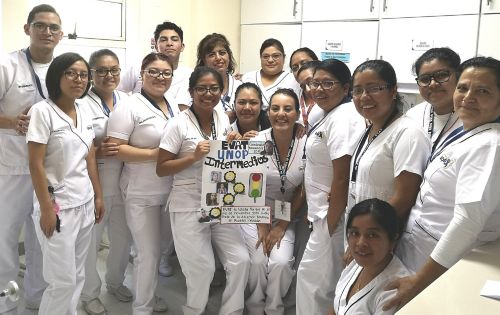
A care team at the Unidad Nacional de Oncologia Pediatrica (UNOP) in Guatemala used posters to remind staff to watch for signs and symptoms of problems from treatment side effects.
How care teams can identify serious side effects related to treatment
Health care teams play an important role, too, especially nurses. Agulnik calls nurses the “cornerstone” because they care for the child daily and may be the first to notice and report problems.
Medical staff can build good relationships with families, each other, and ask their health care systems to use PEWS, EVAT, or similar systems to improve quality of care.
“If you can catch complications early, you don't need fancy equipment or treatments to help save a child,” Agulnik says.
Read the research papers
Ehrlich BS, et al. Treatment-related mortality in children with cancer in low-income and middle-income countries: a systematic review and meta-analysis. Lancet Oncol. 2023 Sep;24(9):967-977.
Agulnik A, et al. EVAT Study Group. Effect of paediatric early warning systems (PEWS) implementation on clinical deterioration event mortality among children with cancer in resource-limited hospitals in Latin America: a prospective, multicentre cohort study. Lancet Oncol. 2023 Sep;24(9):978-988.
Learn more about Proyecto EVAT
Health care teams interested in bringing PEWS or Proyecto EVAT to their hospital can contact the St. Jude Global Critical Care team at globalcriticalcare@stjude.org or proyectoevat@stjude.org (for Latin America).
